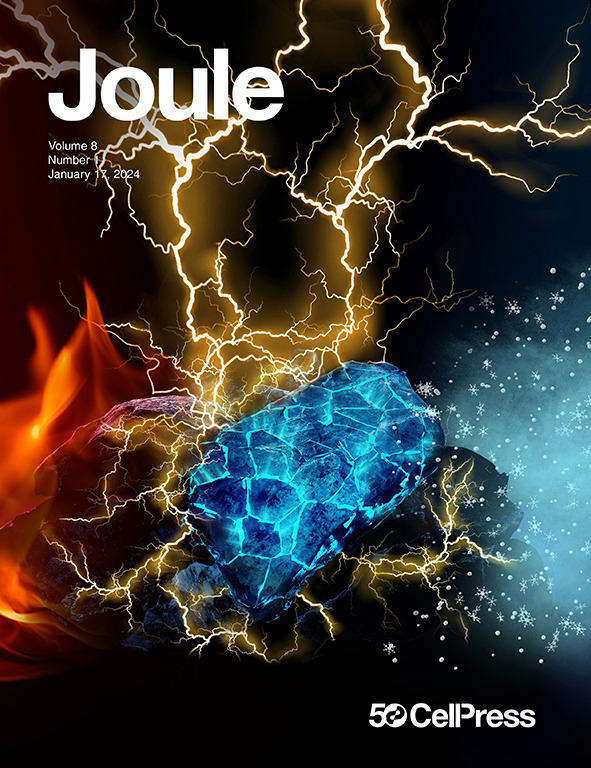基于硫氧化还原反应局部化学环境的可变智能催化剂设计
IF 35.4
1区 材料科学
Q1 CHEMISTRY, PHYSICAL
引用次数: 0
摘要
传统的恒定催化剂设计方法对外部条件的适应性有限,影响了实际锂硫电池的催化性能。在此,我们提出了一种基于催化剂局部化学环境(LCEs)的可变智能催化剂设计策略。多硫化物和溶剂在LCEs内的竞争吸附控制了界面反应,由外在电解质效应和内在催化剂结构之间的相互作用调节。使用硫化镍作为模型系统,可解释的机器学习方法为结构调整提供了智能见解。在稀释和浓缩的多硫化物的lce中观察到反催化效率,并提出了不同的催化剂改性指导,分别加速电子和离子的转移速率。基于Ni3S2催化剂的Li-S电池在稀薄的电解液中表现出优异的性能,在袋式电池中实现了433 Wh kg−1的能量密度。本研究为催化剂的设计提供了一个完整的方案,并通过催化转化促进锂硫电池的实际应用。本文章由计算机程序翻译,如有差异,请以英文原文为准。


Variable and intelligent catalyst design based on local chemical environments in sulfur redox reactions
The conventional constant catalyst design approach demonstrates limited adaptability to external conditions, impairing the catalytic performance in practical lithium-sulfur (Li-S) batteries. Here, we propose a variable and intelligent catalyst design strategy based on catalysts’ local chemical environments (LCEs). The competing adsorption between polysulfides and solvents within LCEs governs the interfacial reactions, regulated by the interaction between extrinsic electrolyte effects and intrinsic catalyst structures. Using nickel sulfides as a model system, interpretable machine-learning methods provide intelligent insights into structural tuning. Reversed catalytic efficiency is observed in LCEs of diluted and concentrated polysulfides, and variable catalyst modification guidance is presented for accelerating electron and ion transfer rates, respectively. Li-S batteries based on a Ni3S2 catalyst manifest exceptional performance in a lean electrolyte, achieving an energy density of 433 Wh kg−1 in pouch cells. This investigation provides a thorough design protocol for catalysts and promotes practical applications of Li-S batteries through catalytic conversion.
求助全文
通过发布文献求助,成功后即可免费获取论文全文。
去求助
来源期刊

Joule
Energy-General Energy
CiteScore
53.10
自引率
2.00%
发文量
198
期刊介绍:
Joule is a sister journal to Cell that focuses on research, analysis, and ideas related to sustainable energy. It aims to address the global challenge of the need for more sustainable energy solutions. Joule is a forward-looking journal that bridges disciplines and scales of energy research. It connects researchers and analysts working on scientific, technical, economic, policy, and social challenges related to sustainable energy. The journal covers a wide range of energy research, from fundamental laboratory studies on energy conversion and storage to global-level analysis. Joule aims to highlight and amplify the implications, challenges, and opportunities of novel energy research for different groups in the field.
 求助内容:
求助内容: 应助结果提醒方式:
应助结果提醒方式:


